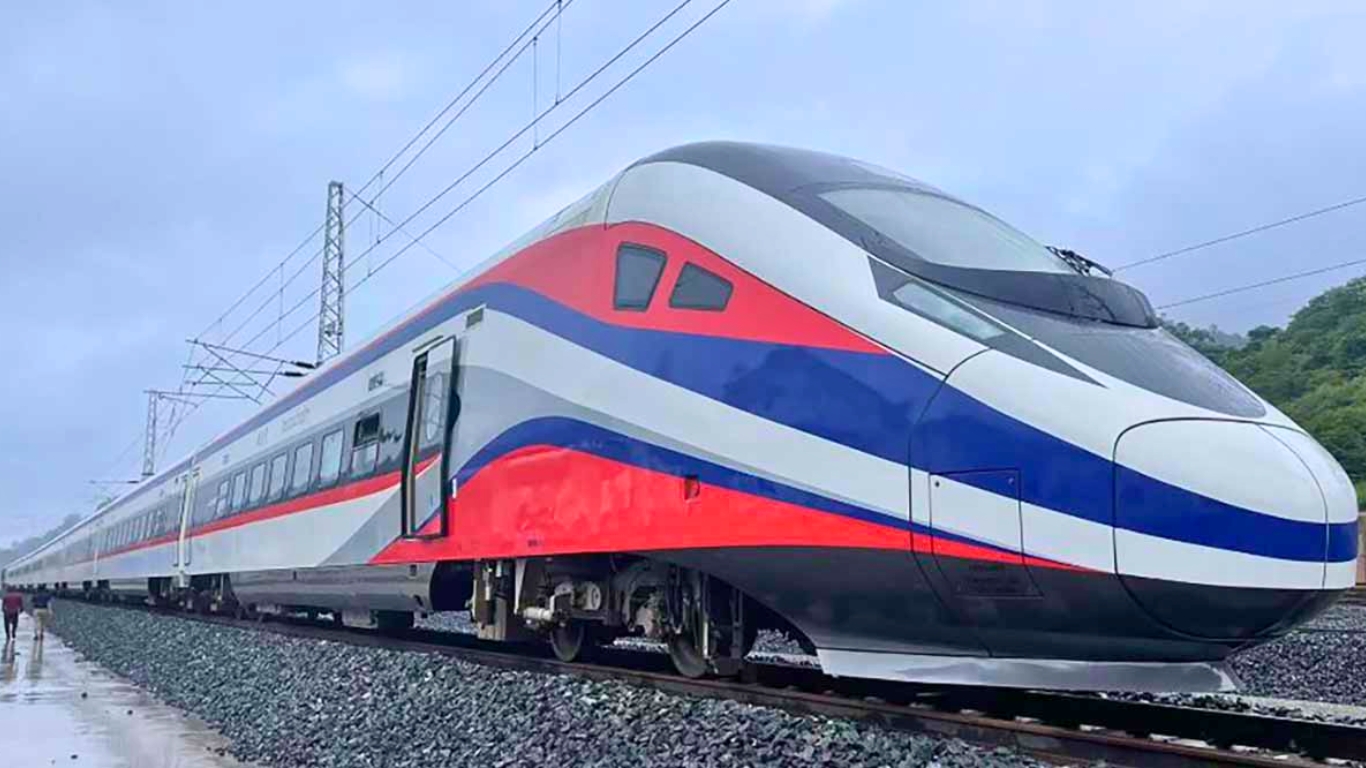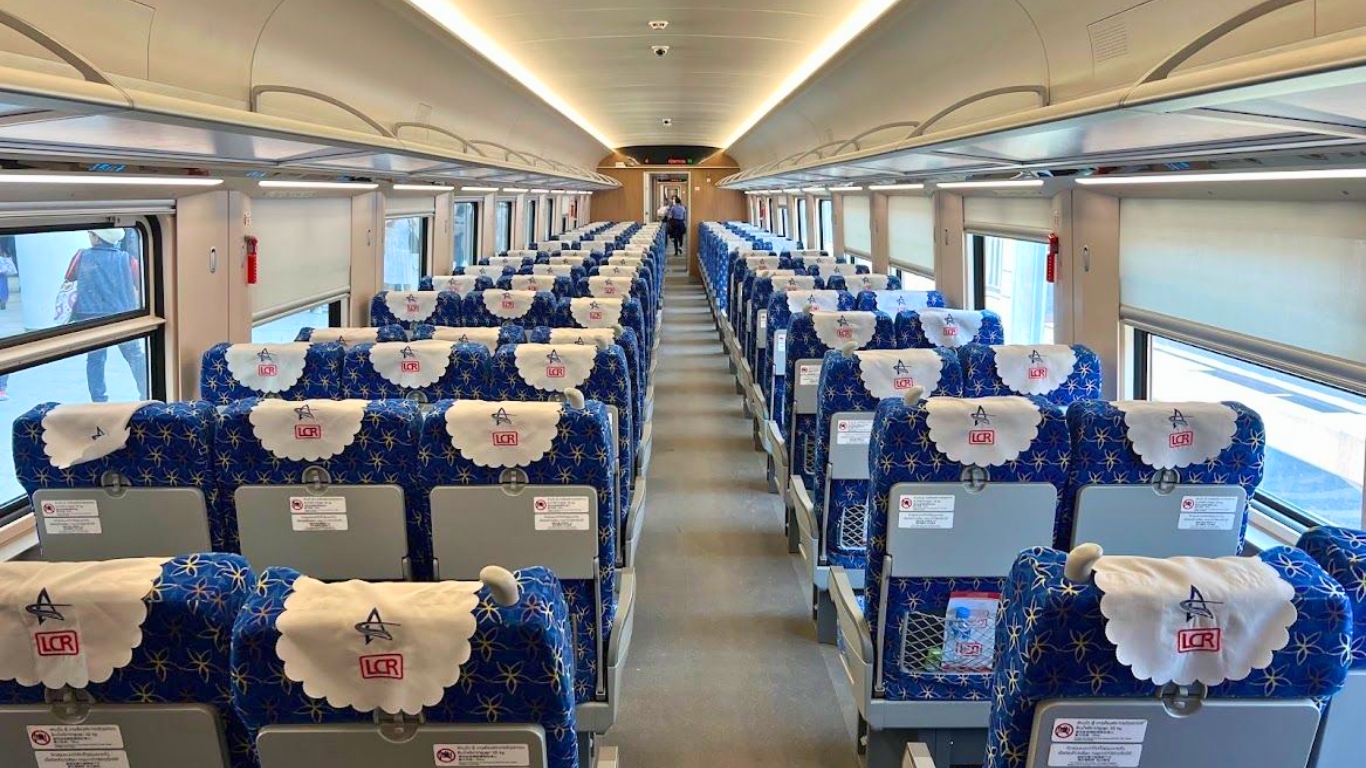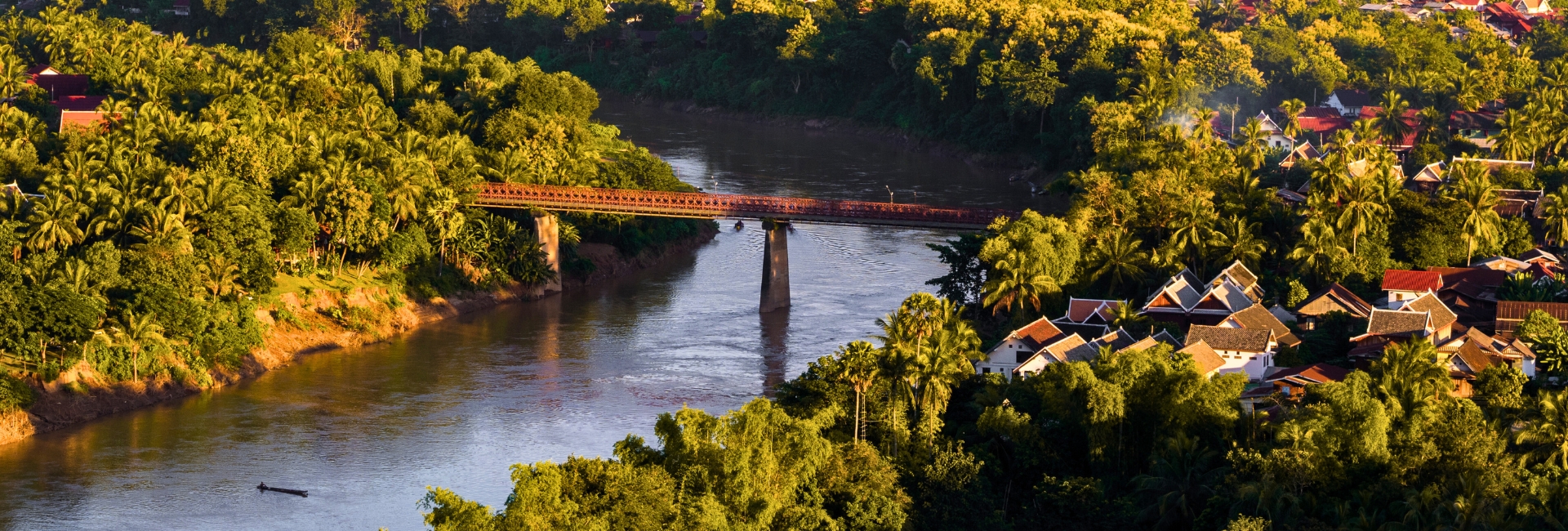Are you wondering about traveling by train from Vientiane to Luang Prabang? For travelers planning a journey through this beautiful Southeast Asian country, understanding your transportation options is essential for making the most of your Laotian adventure. Let’s explore everything you need to know about the train from Vientiane to Luang Prabang and alternative travel methods.
How far is from Vientiane to Luang Prabang?
The distance between Vientiane and Luang Prabang is approximately 311 kilometers (193 miles) if traveling by road. This journey takes around 6-7 hours when driving directly, winding through mountainous terrain and scenic landscapes.
What to expect in Vientiane:
- Modern capital city with a relaxed riverside atmosphere
- Important Buddhist temples including Pha That Luang and Wat Si Saket
- French colonial architecture and wide boulevards
- Night markets and authentic Lao cuisine
- The impressive Buddha Park (Xieng Khuan)
What to expect in Luang Prabang:
- UNESCO World Heritage Site with exceptionally preserved architecture
- Morning alms ceremony with hundreds of monks
- Stunning Kuang Si Waterfalls just outside the city
- Night market showcasing local handicrafts
- Traditional Lao wooden houses and French colonial buildings
- Magnificent temples including Wat Xieng Thong
How long is the train ride from Vientiane to Luang Prabang?

The high-speed train from Vientiane to Luang Prabang takes approximately 2 hours, dramatically reducing travel time compared to road options. This modern train, part of the China-Laos Railway project, has transformed travel between these two important destinations.
There are two main train options:
- High-speed train: 2 hours, modern facilities, air-conditioned carriages, popular with tourists
- Slow train: Approximately 6 hours, used primarily by locals, more basic facilities
The high-speed train experience is comfortable but busy. Carriages are clean and air-conditioned with assigned seating and space for luggage. Windows offer views of the countryside, though many sections pass through tunnels, limiting some scenic opportunities. The train moves smoothly and reaches impressive speeds that make the journey efficient.
Most travelers report that the stations themselves are quite modern but located outside city centers. The trains are often filled with Chinese tourists, so expect crowds, especially during peak travel seasons. Since tickets sell out quickly, booking in advance is essential.
While the train journey itself doesn’t offer the best views due to numerous tunnels, it’s remarkably efficient and comfortable. For those short on time, it’s an excellent option to maximize your time in both destinations rather than spending a full day on the road.
How to get the ticket?

Securing train tickets between Vientiane and Luang Prabang requires some planning, as the process isn’t always straightforward for international travelers. Here’s what you need to know:
Ticket Booking Timeline: Tickets can be purchased only within 3 days before your travel date. Waiting until 2 days before often means facing sold-out trains, especially during high season.
Ticket Purchasing Options:
- In person at the station: Possible but challenging as stations are typically located far from city centers. The ticket offices may not accept Western credit cards or even cash from foreign travelers in some cases.
- LCR Ticket App: The official booking app only accepts Thai, Lao, or Chinese phone numbers for registration, making it difficult for international travelers to use.
- Through accommodation: Many hotels and guesthouses offer ticket booking services for a small fee. This is often the most convenient option and includes transportation to the station.
- 12go.asia: This online platform allows bookings 3 days prior to departure, but availability can be limited with last-minute bookings.
- Travel agents: Local agents can secure tickets but typically charge a premium. The advantage is they often include transport to and from the stations.
Station Information: Both Vientiane and Luang Prabang stations are modern but located well outside the city centers:
- Vientiane station (Khamsavath) is about 12km from downtown
- Luang Prabang station is approximately 15km from the old town
Ticket Prices (2025):
- First Class: 320,000-350,000 LAK (approximately $16-18 USD)
- Second Class: 250,000-280,000 LAK (approximately $13-15 USD)
Important Tips:
- Arrive at least 45 minutes before departure as security checks can be time-consuming
- Bring your passport for ticket purchase and boarding
- Consider booking a return ticket at the same time if your schedule is fixed
- Factor in the cost of transportation to and from the stations (typically $5-10 USD each way)
Are there any options from Vientiane to Luang Prabang beside by train?
While the train has become the preferred option for many travelers, several alternatives exist for those who want different experiences or more flexibility.
Bus

- Time: 7-9 hours depending on stops and road conditions
- Price: $12-20 USD depending on bus quality
Buses remain a popular budget option for traveling between Vientiane and Luang Prabang. The journey offers more scenic views than the train, particularly north of Vang Vieng where the landscapes become increasingly dramatic with limestone karsts and mountain views.
Several types of buses operate on this route:
- VIP buses with air conditioning and reclining seats
- Local buses that make more frequent stops
- Sleeper buses for overnight journeys (though day travel is recommended for the views)
Most buses depart from the Northern Bus Terminal in Vientiane and arrive at the Southern Bus Terminal in Luang Prabang. The road conditions have improved in recent years but can still be rough in sections. Stops are typically made for meals and restroom breaks.
Travel Tips for Bus Journey:
- Book tickets a day in advance during high season
- Bring motion sickness medication if you’re sensitive to winding roads
- Pack snacks and water, though stops are made for food
- Keep valuables close as overhead storage isn’t always secure
Pros:
- More scenic views than the train
- Budget-friendly option
- Greater availability of departure times
- Cultural experience interacting with locals
Cons:
- Much longer journey time
- Comfort level varies significantly between bus types
- Road conditions can be rough and winding
- Not ideal during rainy season when landslides can cause delays
Private Car
- Time: 6-7 hours with flexibility for stops
- Price: $150-250 USD for the entire vehicle
Hiring a private car or minivan offers the most flexibility for the journey between Vientiane and Luang Prabang. This option allows you to stop at points of interest along the way, including the stunning Vang Vieng region with its dramatic karst landscapes and outdoor activities.
A private driver can be arranged through most hotels or travel agencies in Vientiane. The vehicle typically accommodates 3-4 passengers comfortably, making it cost-effective for small groups. Many drivers speak basic English, though comprehensive guides cost extra.
The journey by car allows you to create a customized itinerary. Popular stops include:
- Vang Vieng for a lunch break or overnight stay
- Viewpoints along the mountainous sections
- Local villages and markets
- Nam Ngum Lake and reservoir
Travel Tips for Private Car Journey:
- Negotiate the price and itinerary before departure
- Confirm whether the quoted price includes fuel and driver’s meals
- Consider breaking the journey with an overnight stay in Vang Vieng
- Check if your driver is familiar with the route and speaks your language
Pros:
- Complete flexibility with timing and stops
- Most comfortable door-to-door option
- Opportunity to see more of the countryside
- Air conditioning and private space
Cons:
- Most expensive option
- Still a long journey on sometimes rough roads
- Quality of vehicle and driver can vary
- Requires some planning and negotiation
Flight
- Time: 3-5 hours total including connections
- Price: $120-200 USD
Flying between Vientiane and Luang Prabang is complicated by the fact that direct flights are currently not available. Any air journey requires at least one connection, typically through Bangkok, Chiang Mai, or Hanoi, which adds significant time and cost.
The actual flying time is short (usually under an hour per leg), but connections and airport procedures extend the total journey time. This option makes sense only for travelers with severe time constraints or those who are continuing to or from another destination.
Airlines that operate connecting flights include:
- Lao Airlines (via connections)
- AirAsia (via Bangkok)
- Thai Airways (via Bangkok)
Travel Tips for Flying:
- Book well in advance for better rates
- Allow plenty of time for connections
- Check baggage allowances which vary between airlines
- Consider whether the time saved justifies the additional cost
Pros:
- Avoids long road journeys
- Air-conditioned comfort
- Can make sense if connecting from international destinations
- Minimal physical exertion
Cons:
- No direct flights available
- Most expensive option
- When factoring connections, may not save much time over the train
- Miss the scenic landscapes between destinations
- Less environmentally friendly
FAQs
Is Luang Prabang still worth visiting?
Absolutely! Luang Prabang remains one of Southeast Asia’s most enchanting destinations. Its UNESCO World Heritage status has helped preserve its unique blend of traditional Lao architecture and French colonial influences. The morning alms ceremony, night markets, stunning temples, and nearby Kuang Si Waterfalls continue to make it a highlight of any Laos itinerary. The city maintains its charm despite increasing tourism, especially if you explore beyond the main streets.
When is the best time to travel between Vientiane and Luang Prabang?
The best time for this journey is during the dry season from November to April when road conditions are optimal and there’s less chance of delays due to weather. December to February offers the most pleasant temperatures. Avoid the peak rainy season (July-September) if traveling by road, as landslides can occur. Train travel is less affected by seasonal conditions.
Can I do a day trip from Vientiane to Luang Prabang?
While technically possible using the high-speed train, a day trip isn’t recommended. You would spend 4+ hours on round-trip train journeys, leaving minimal time to explore Luang Prabang’s rich cultural offerings. The earliest train departs around 8:00 AM, arriving at 10:00 AM, with the last return at 5:30 PM. This would give you only about 7 hours in Luang Prabang—not enough to do the destination justice.
Is it safe to travel between Vientiane and Luang Prabang?
Yes, the route between Vientiane and Luang Prabang is generally safe for tourists. The train is the safest option, followed by private car and VIP buses. Standard safety precautions apply: keep valuables secure, avoid overnight bus travel when possible, and be aware of your surroundings at stations and rest stops. The biggest safety concerns are related to road conditions rather than security issues.
The train from Vientiane to Luang Prabang has revolutionized travel in Laos, cutting a once-arduous journey down to just two hours. While the high-speed option doesn’t offer the same scenic views as road travel due to numerous tunnels, it provides unmatched efficiency and comfort. For travelers short on time, it’s undoubtedly the best choice.
That said, each transportation method offers its own unique experience. The bus journey showcases more of Laos’ stunning landscapes, private cars provide flexibility to explore stops along the way, and even flight options have their place for certain itineraries.
When planning your journey, consider what matters most to you—time efficiency, scenic views, comfort, or budget. Book your train tickets well in advance through your accommodation to avoid disappointment, as this increasingly popular option sells out quickly.
Whichever mode of transport you choose, the destination is well worth the journey. Luang Prabang’s timeless charm and cultural richness continue to captivate visitors, while Vientiane offers insights into Laos’ evolving identity. The contrast between these two important Laotian destinations makes traveling between them one of Southeast Asia’s most rewarding journeys in 2025.
Thuy Dang – From Indochina Voyages Team








